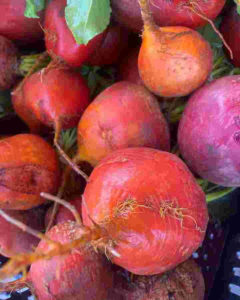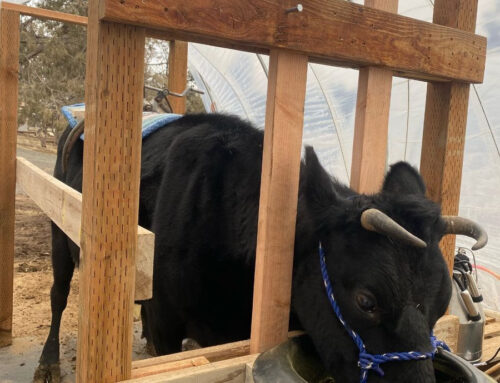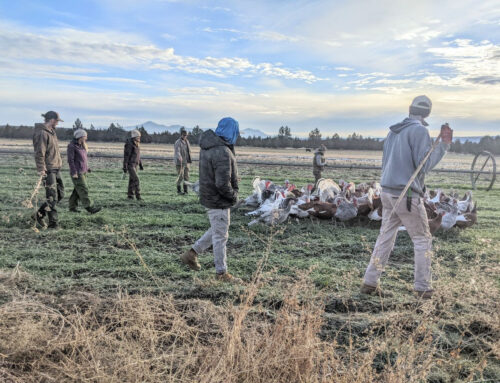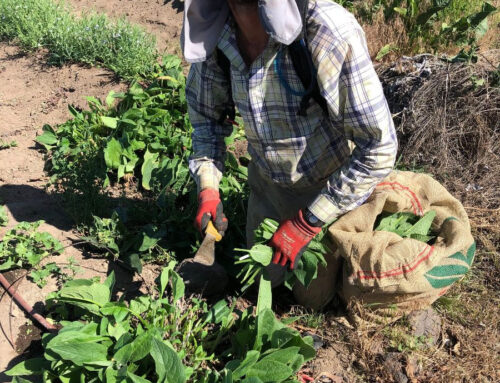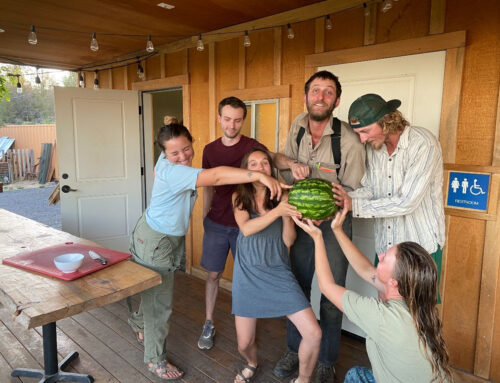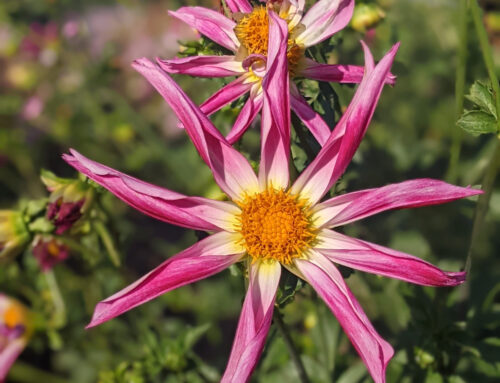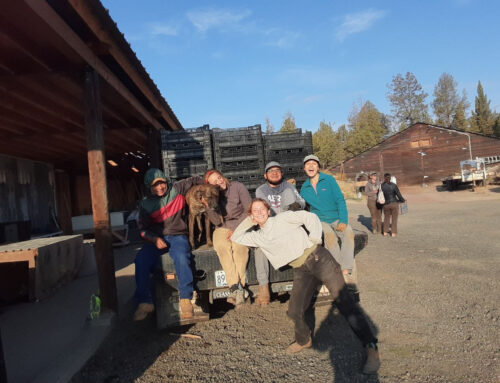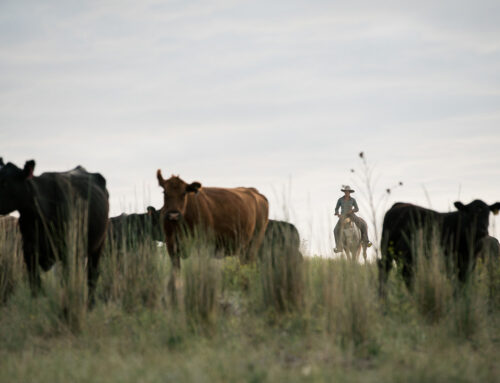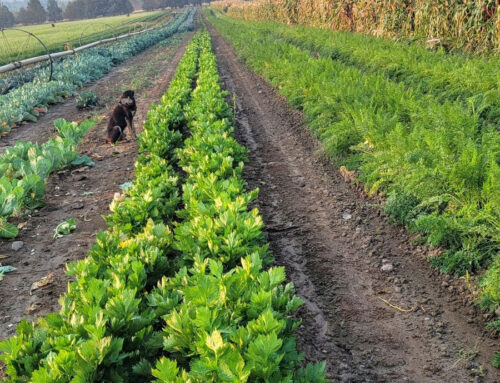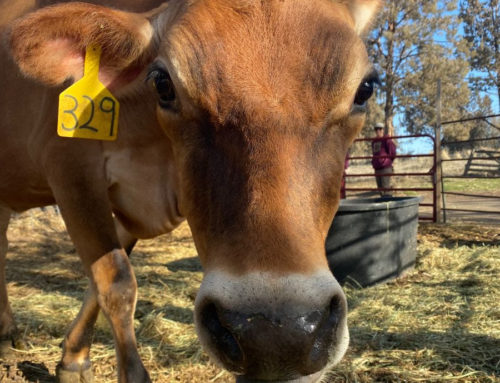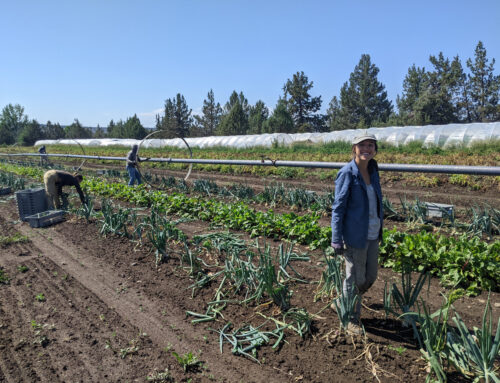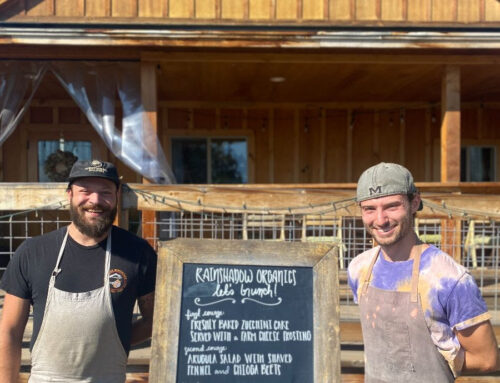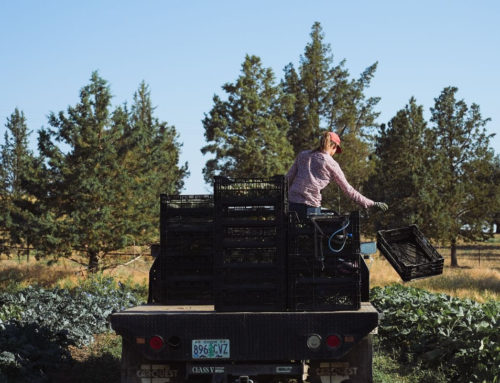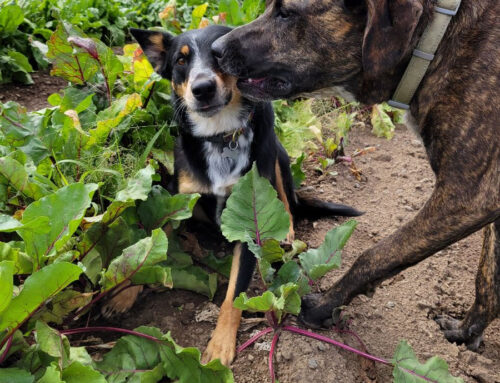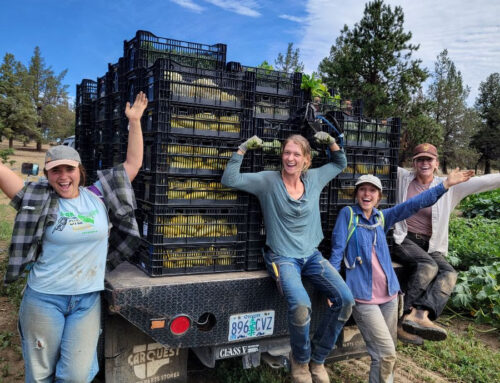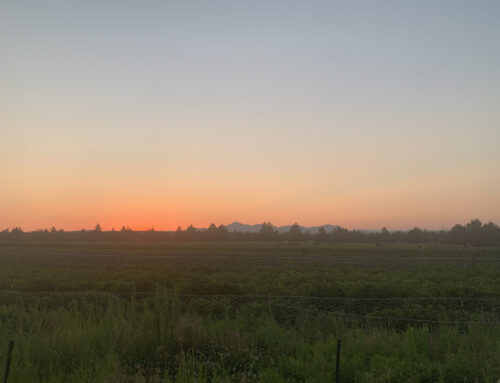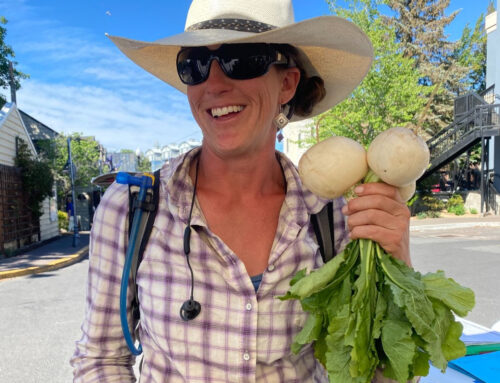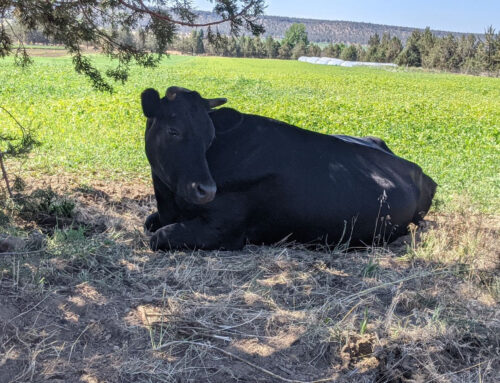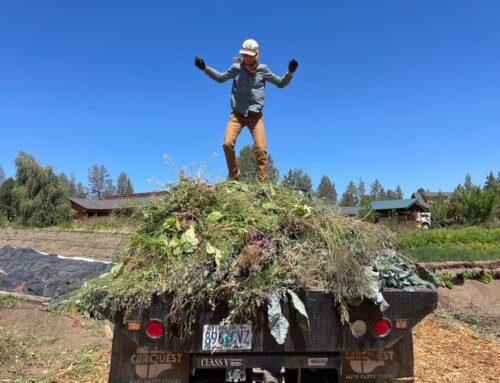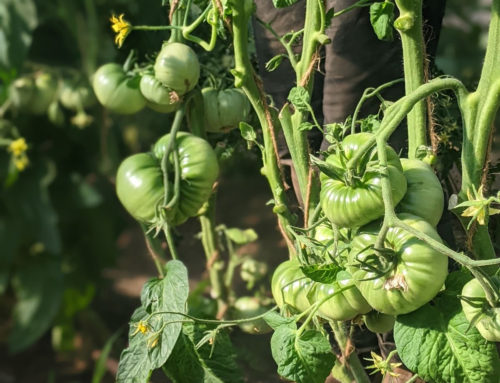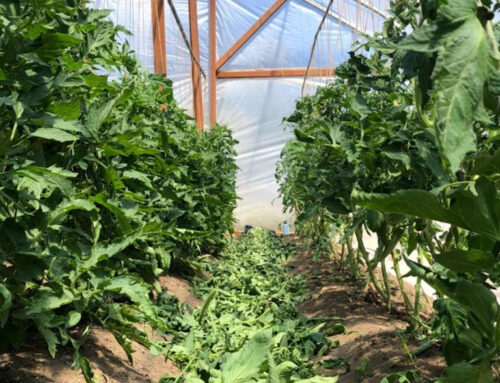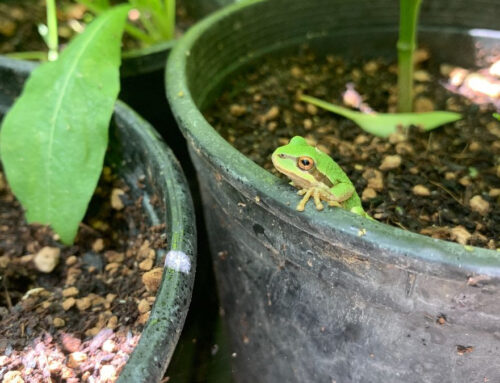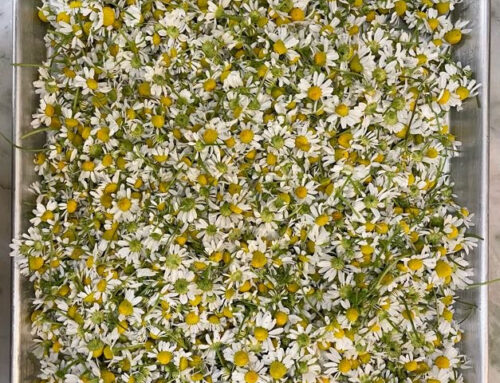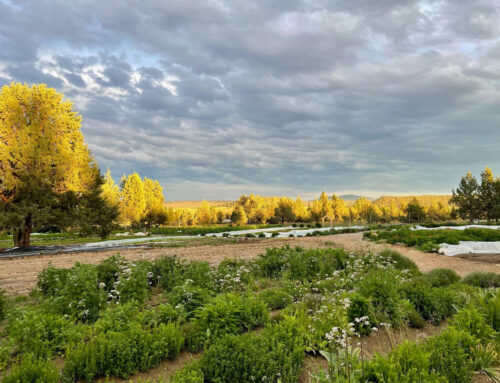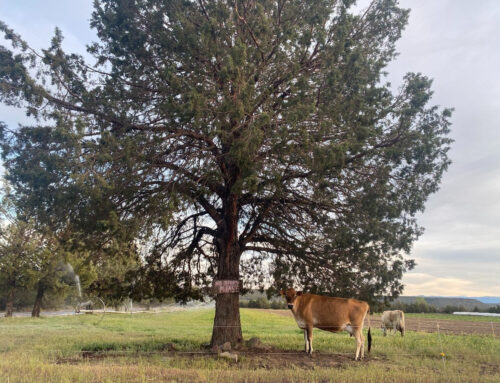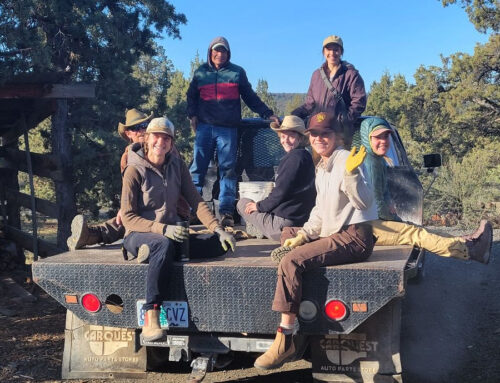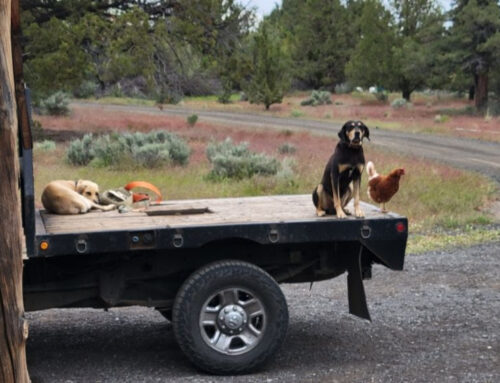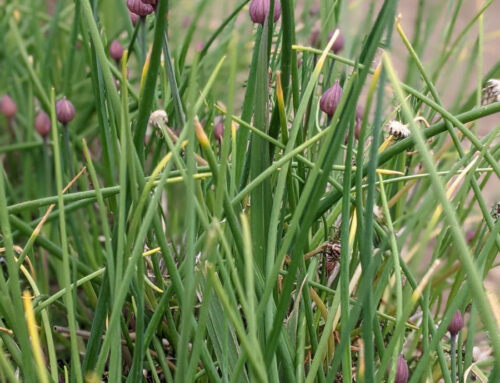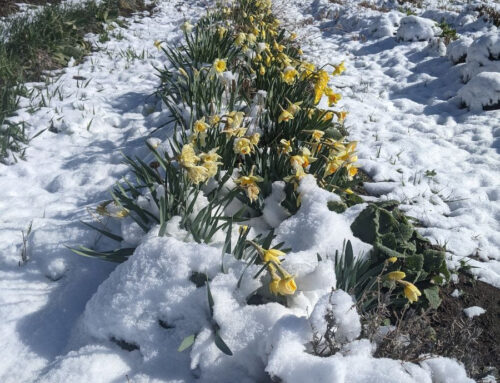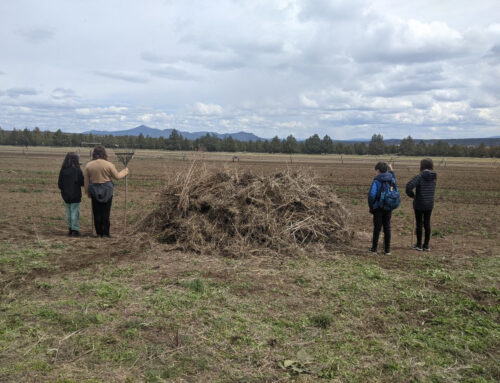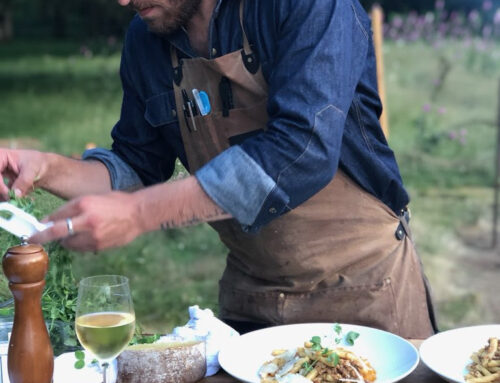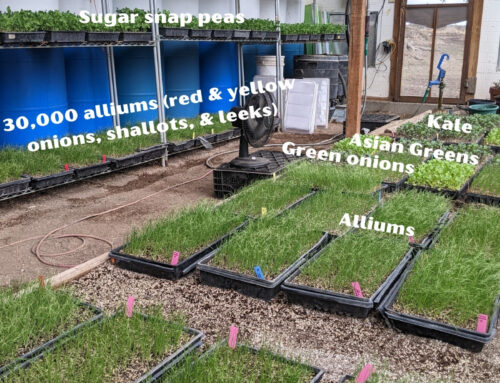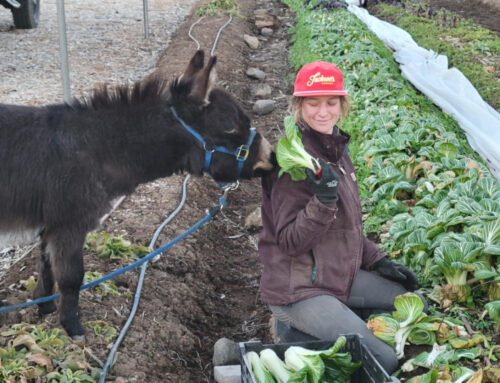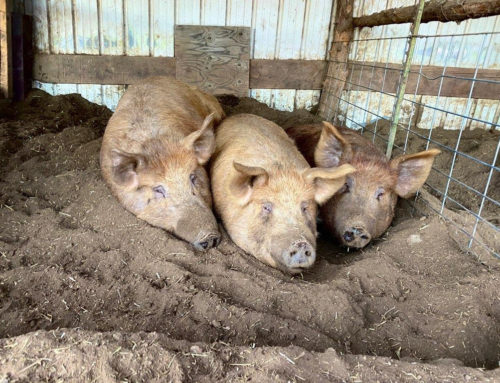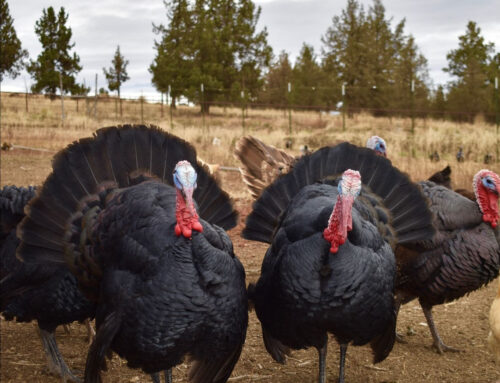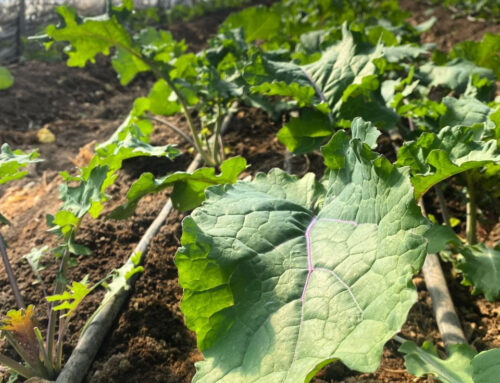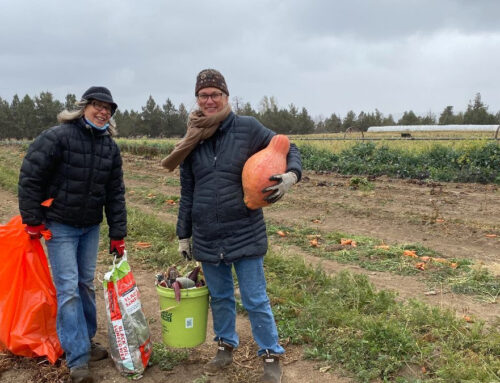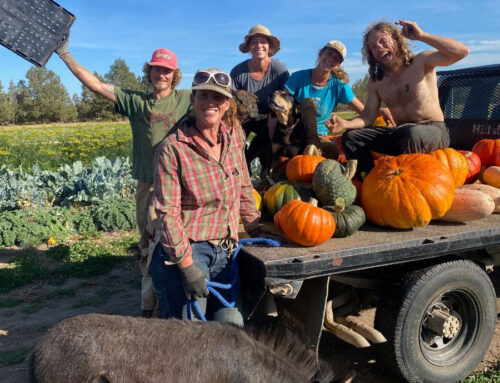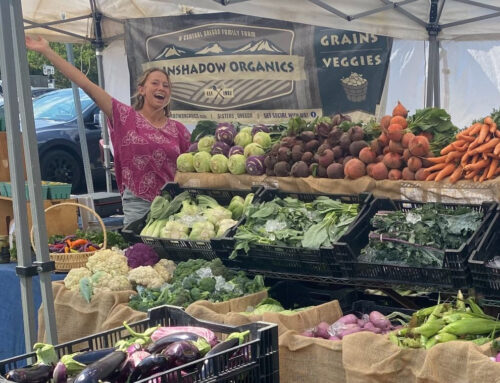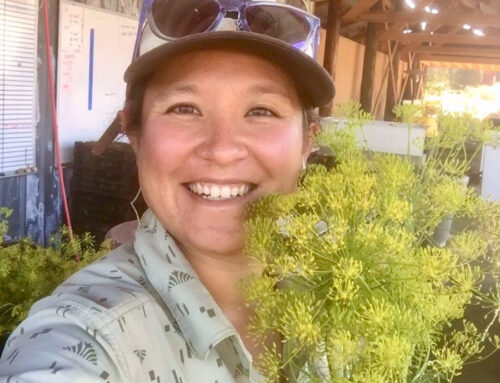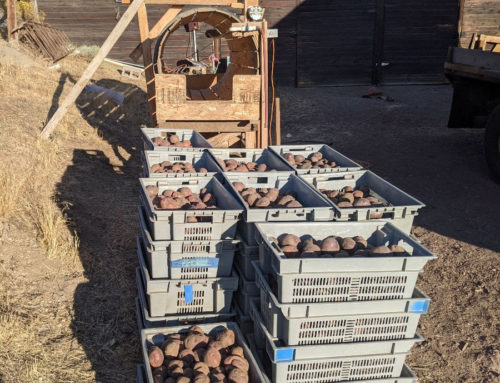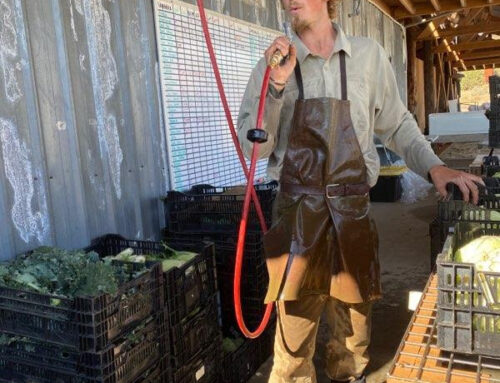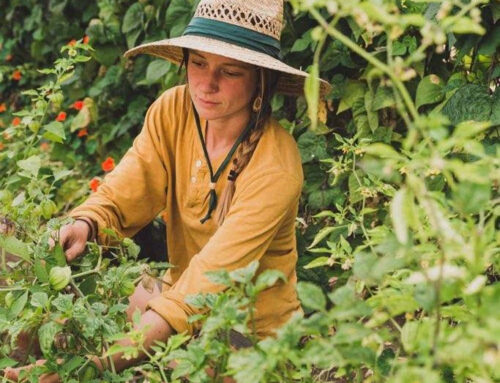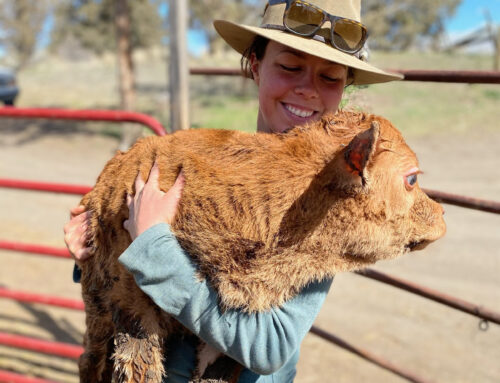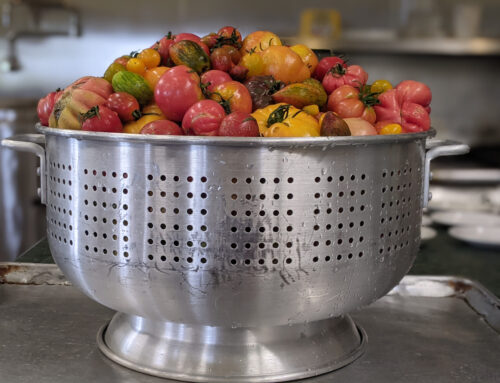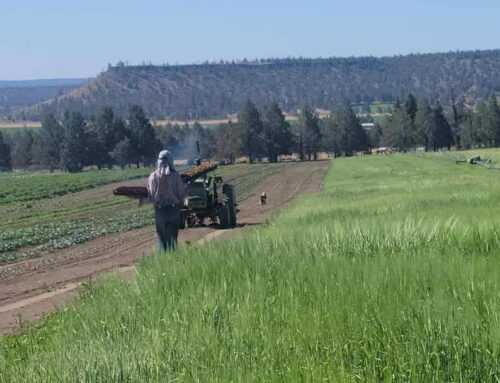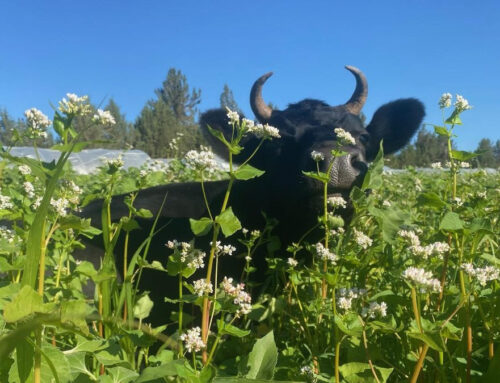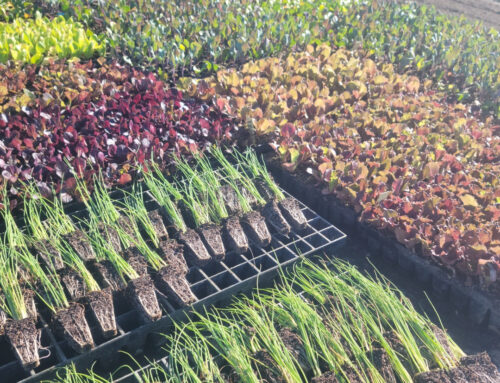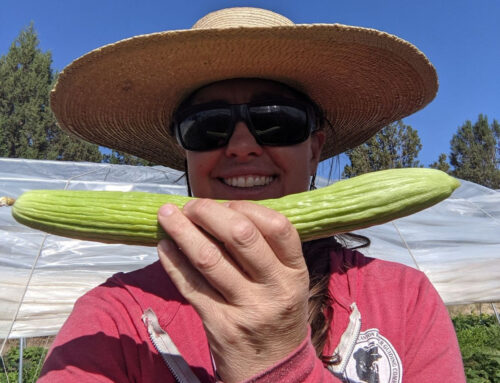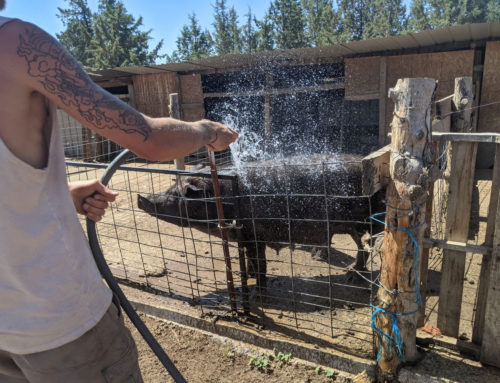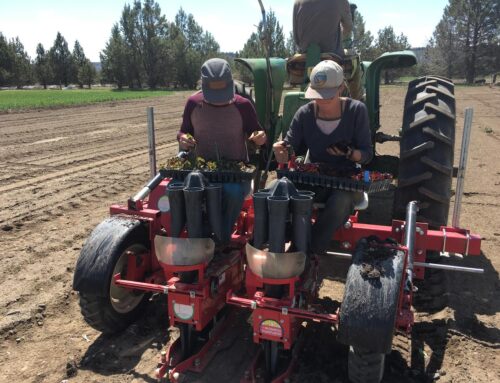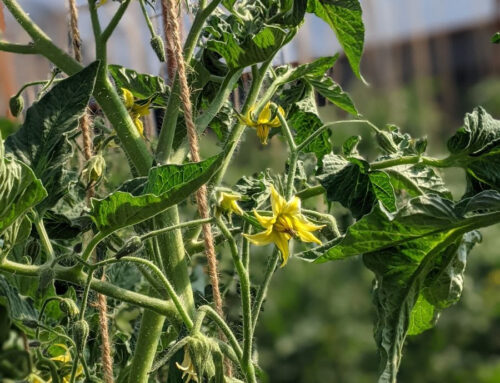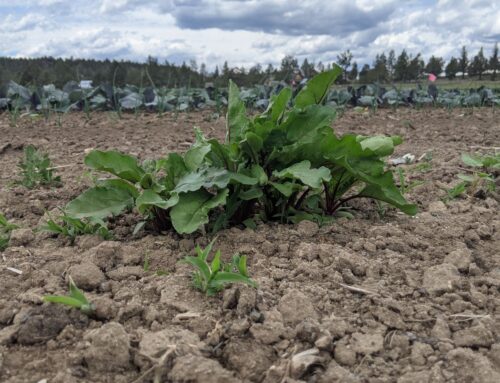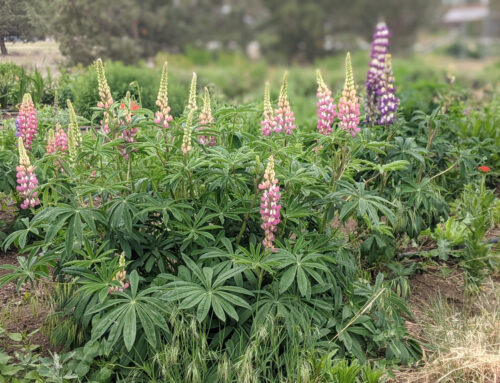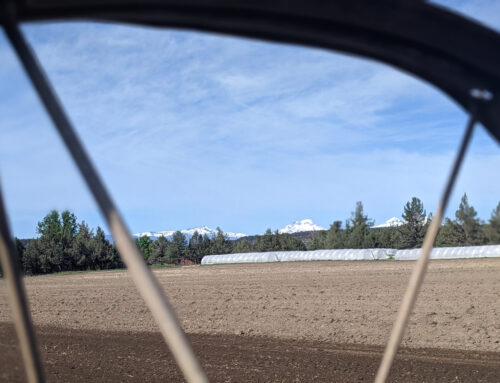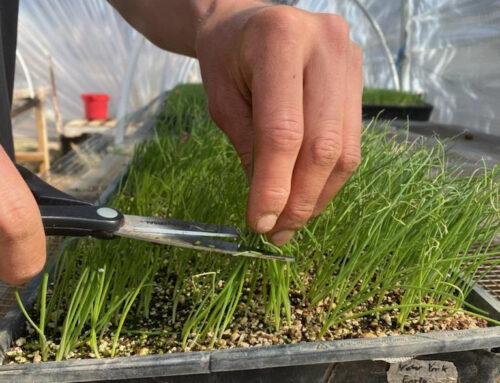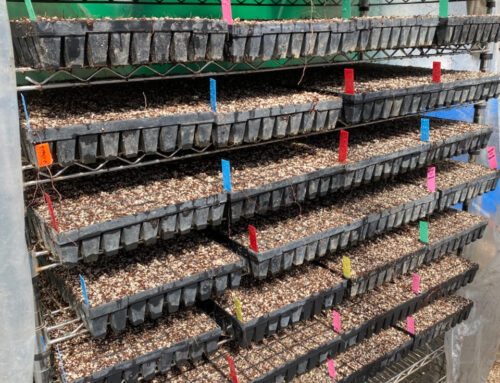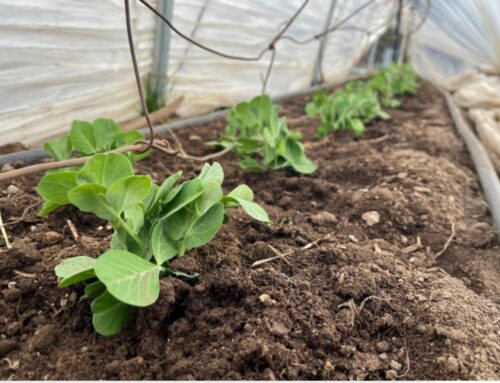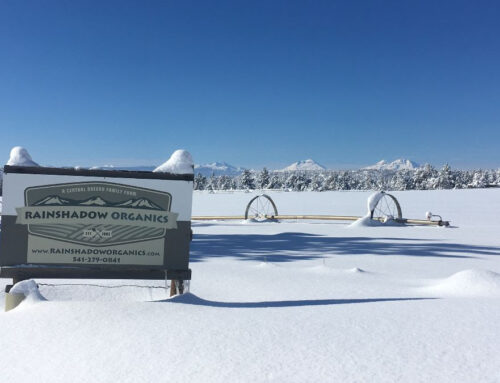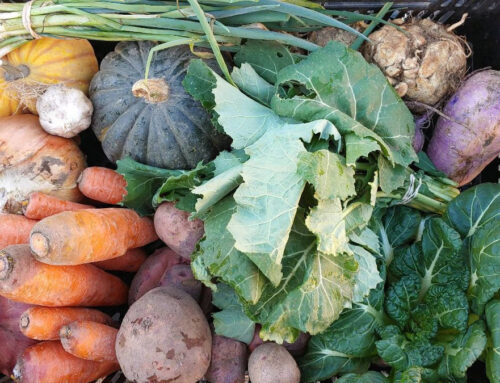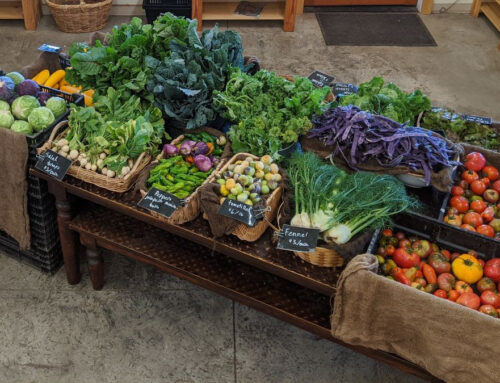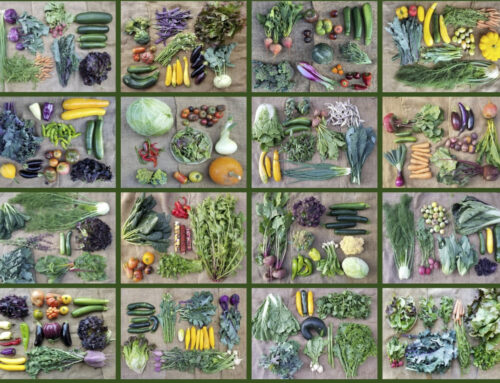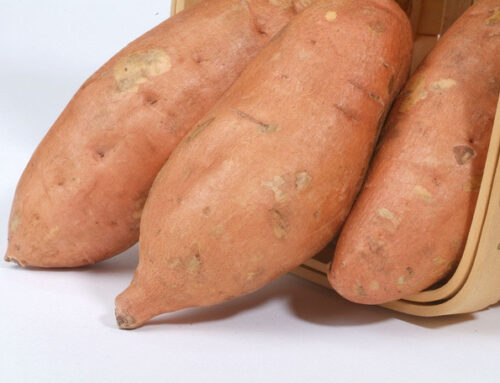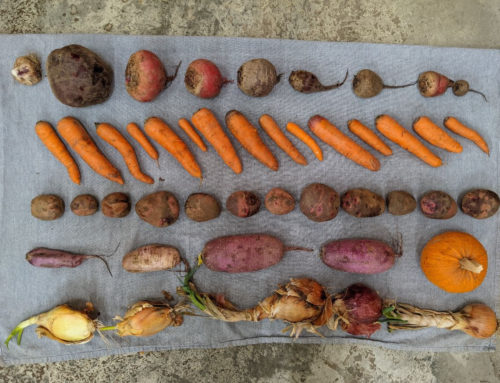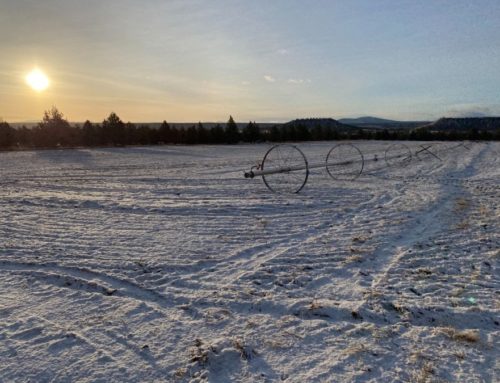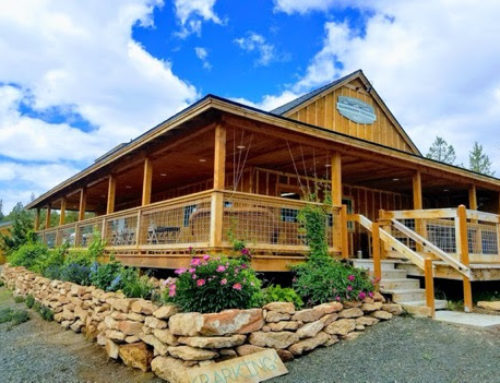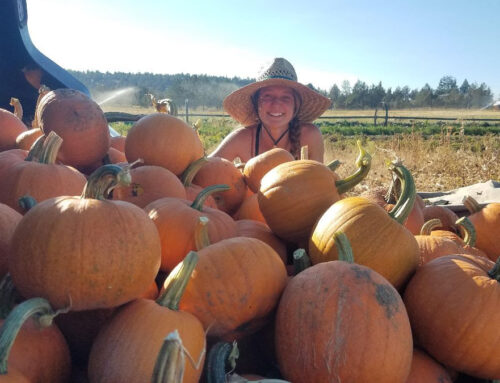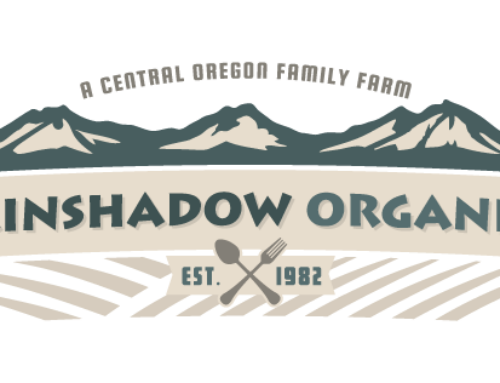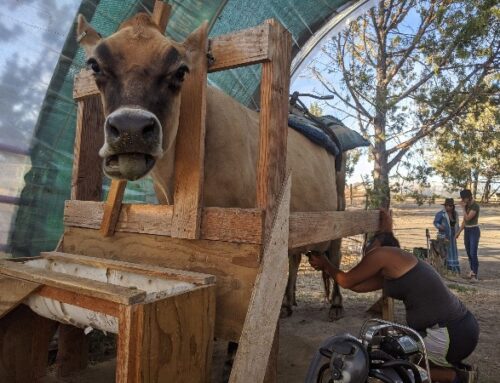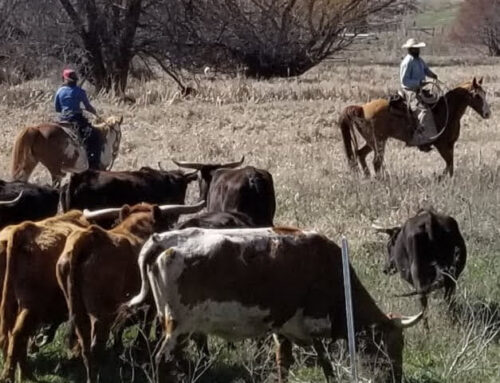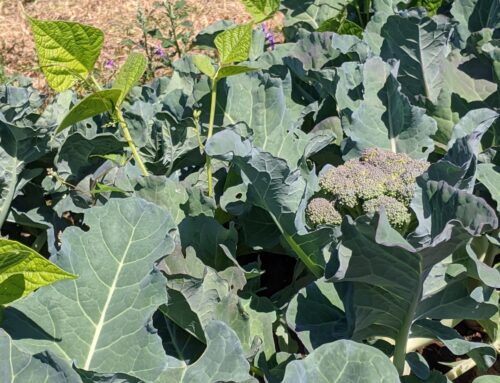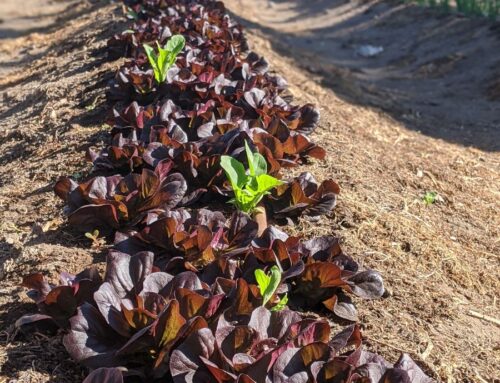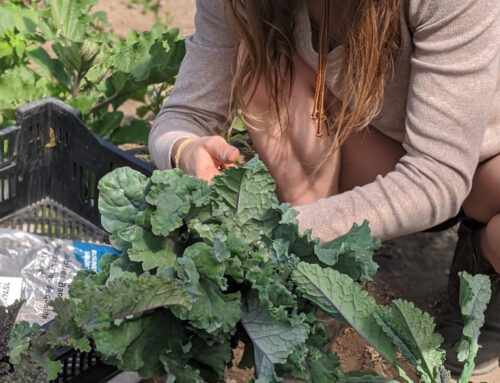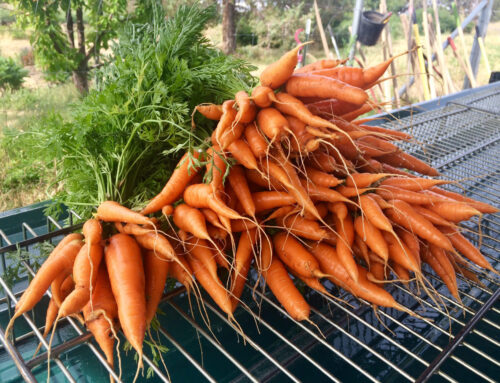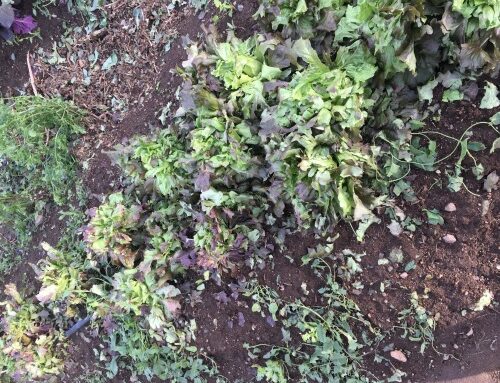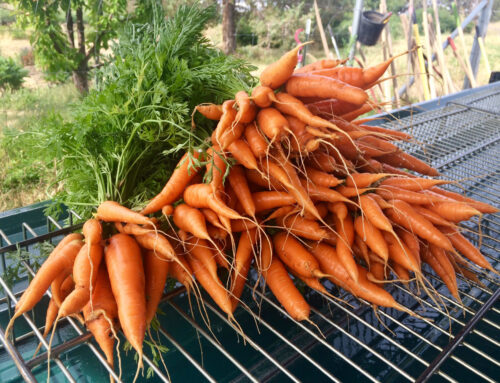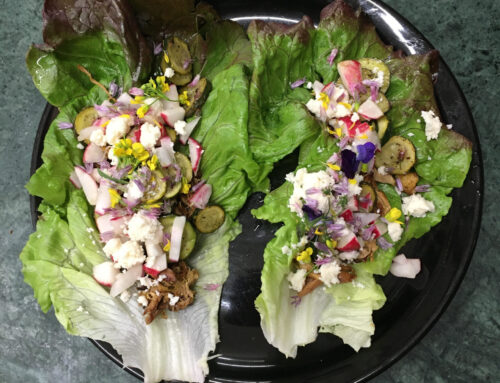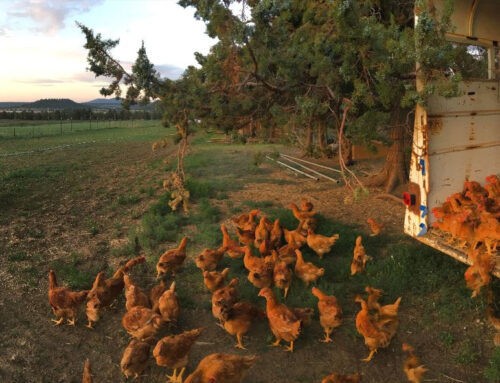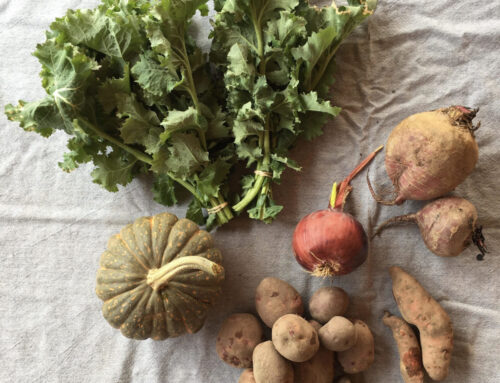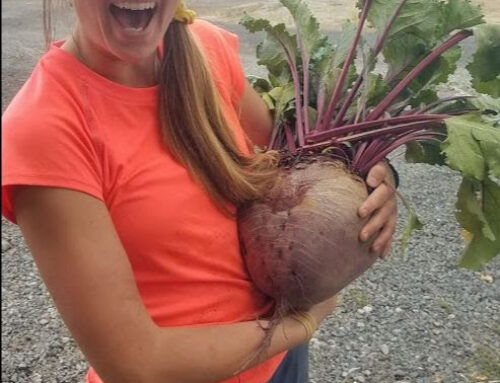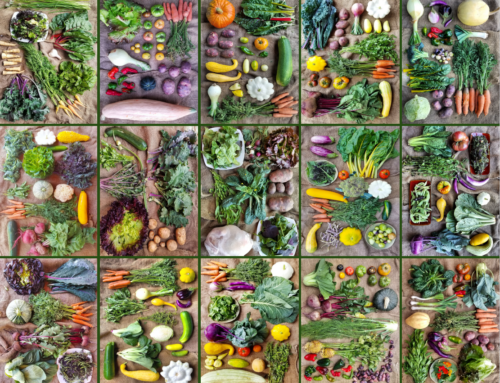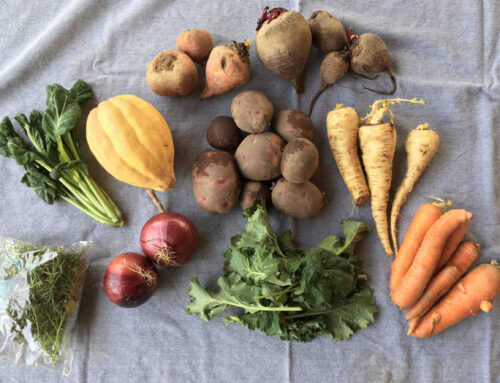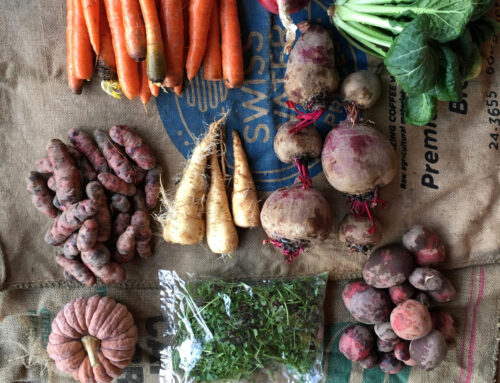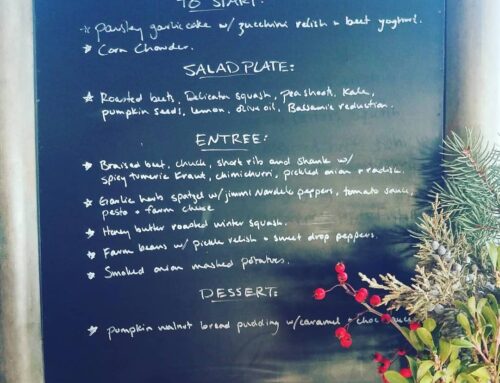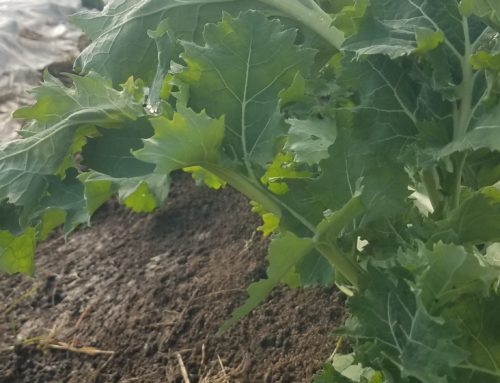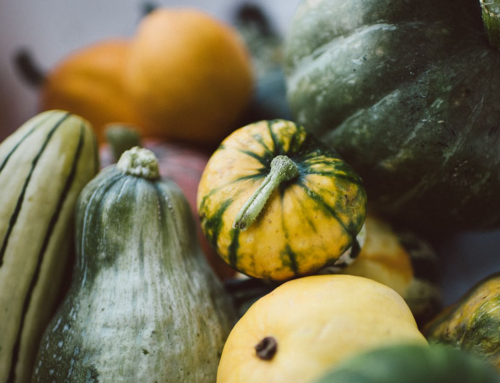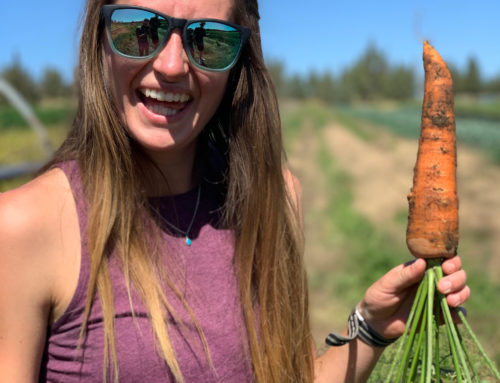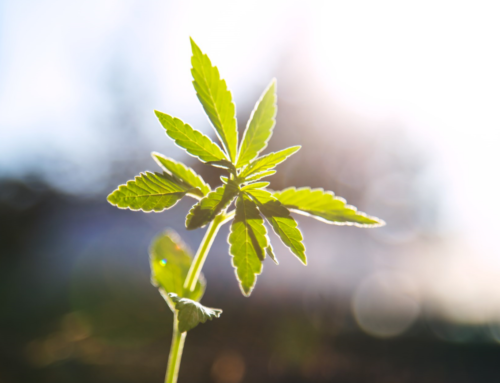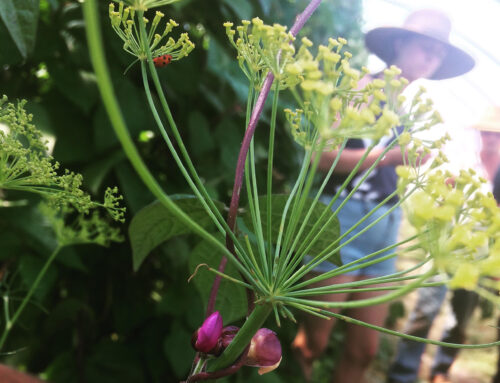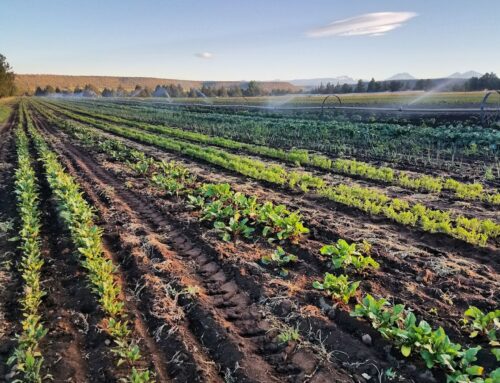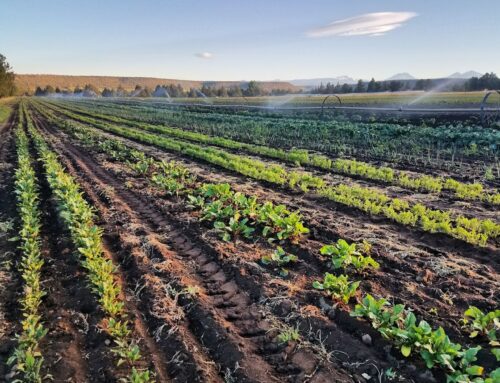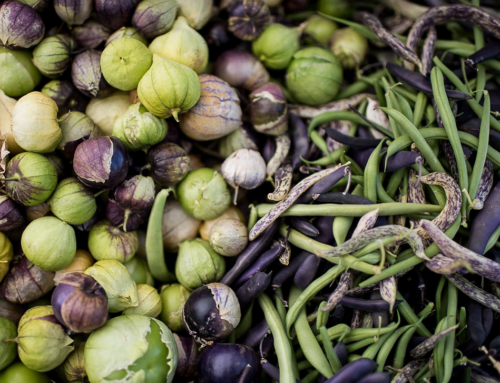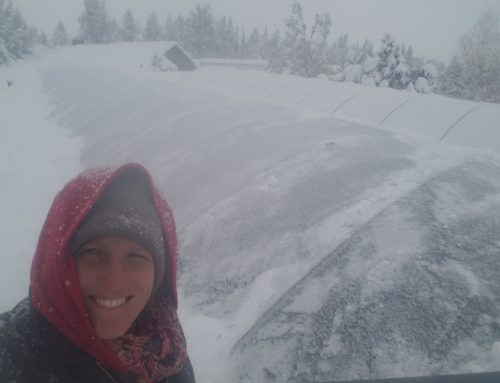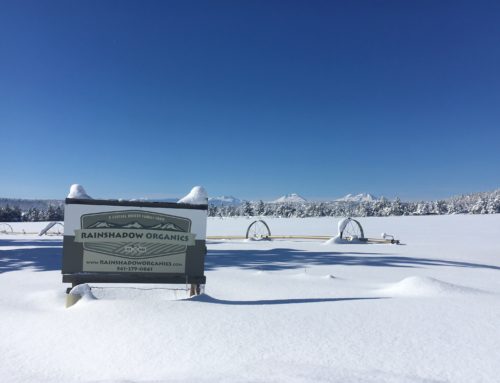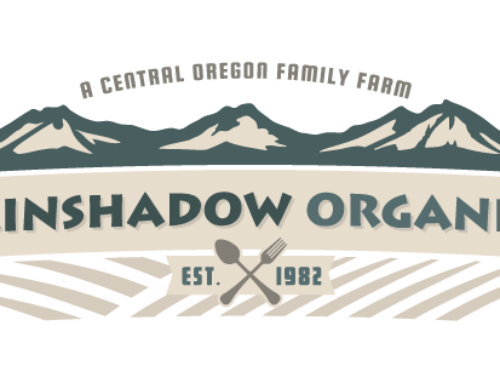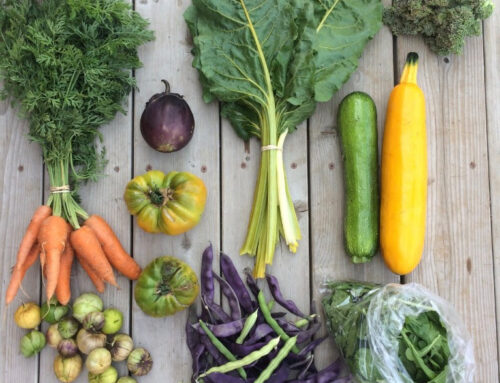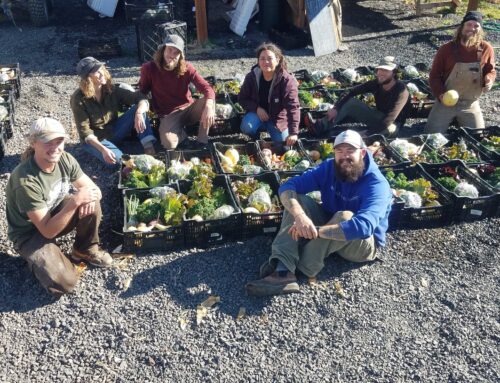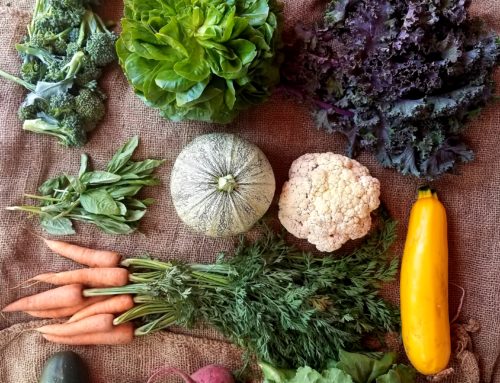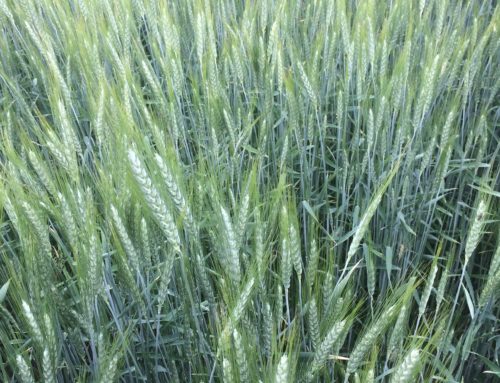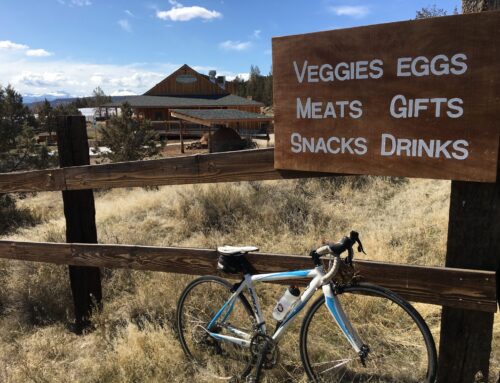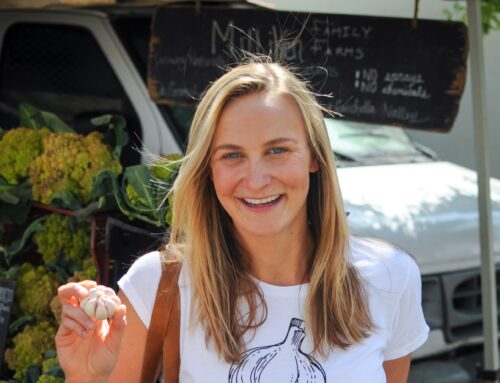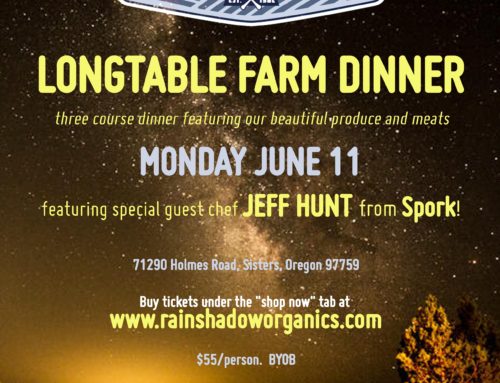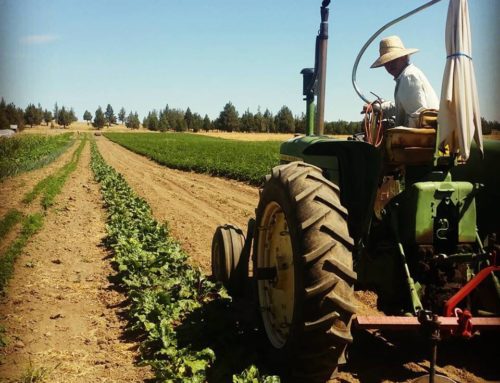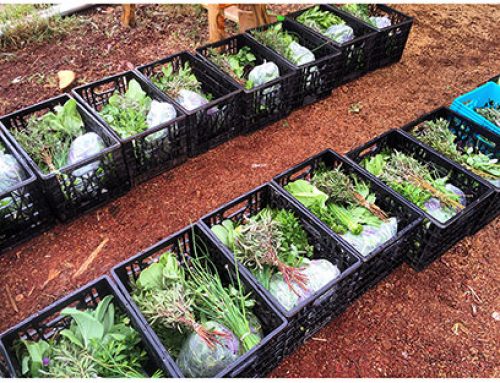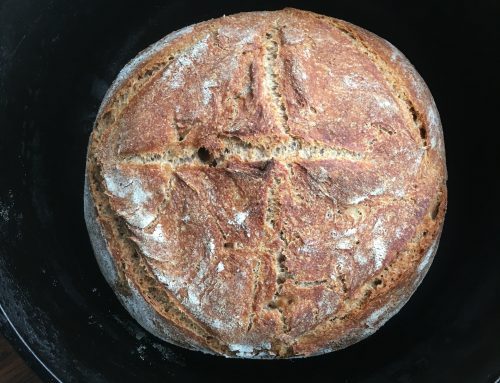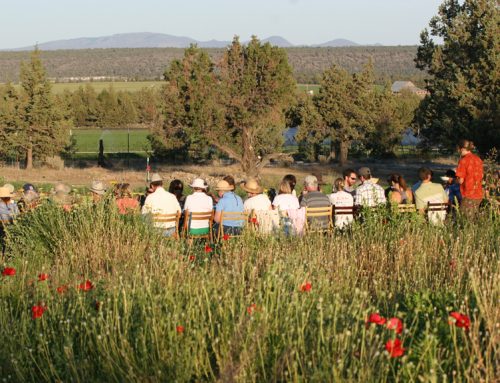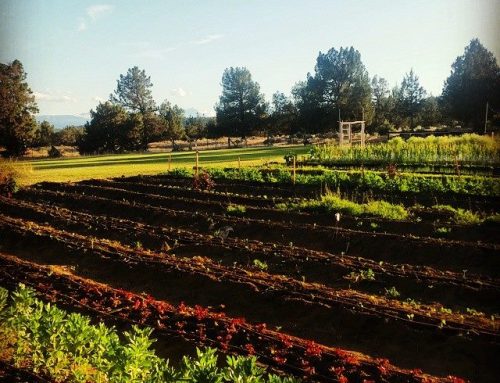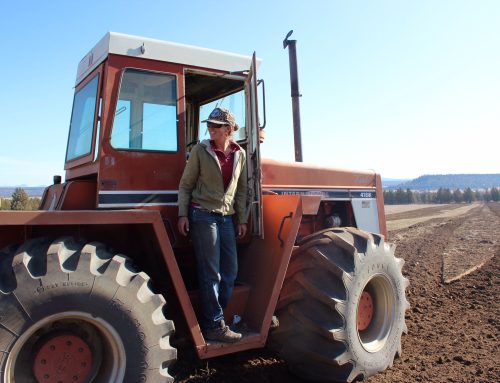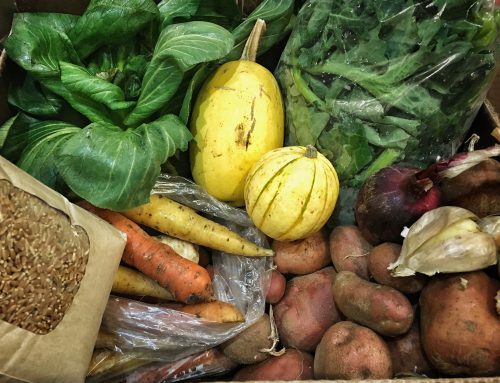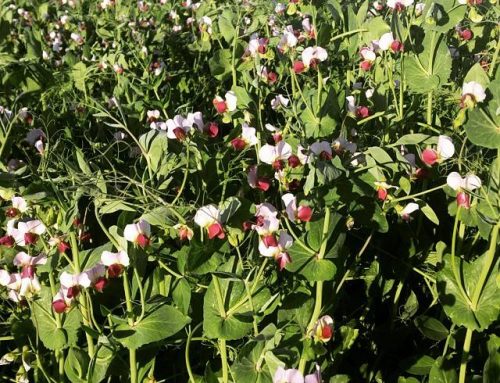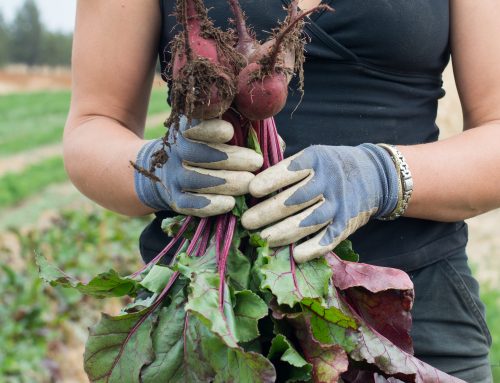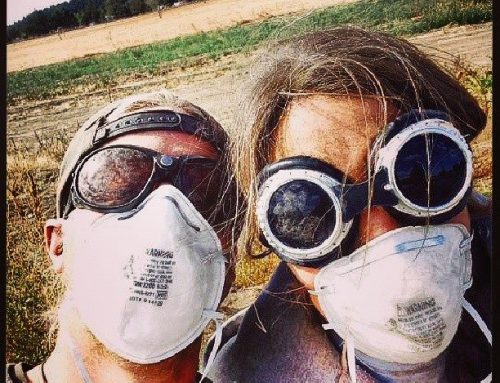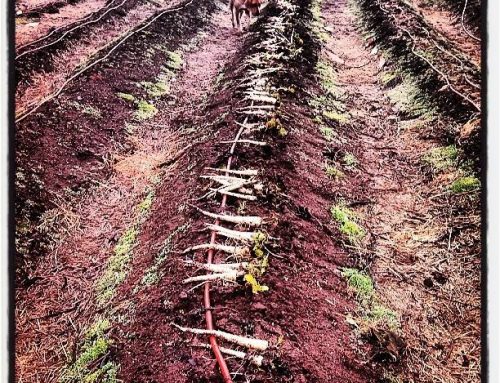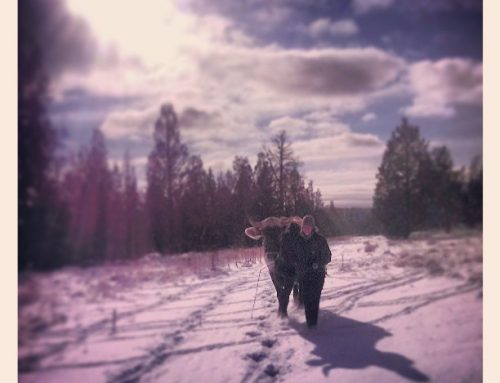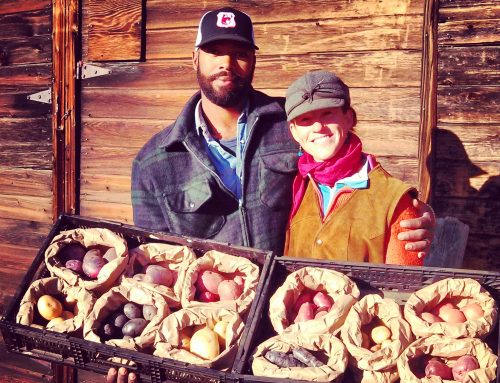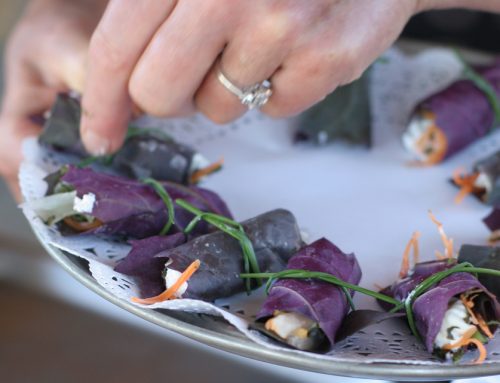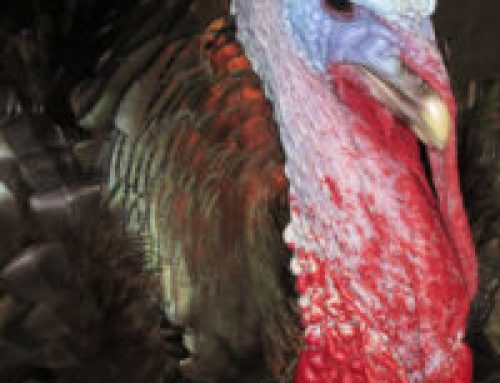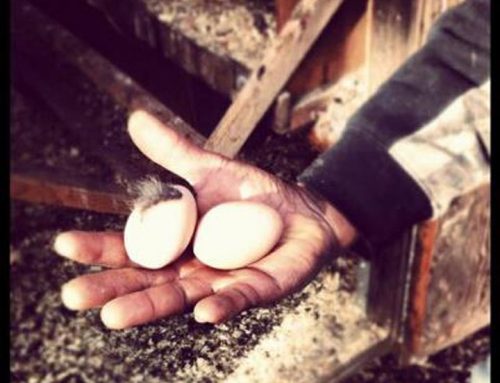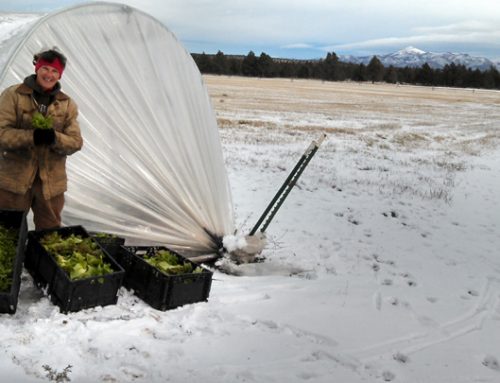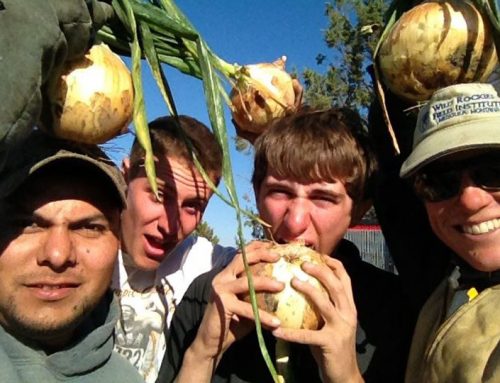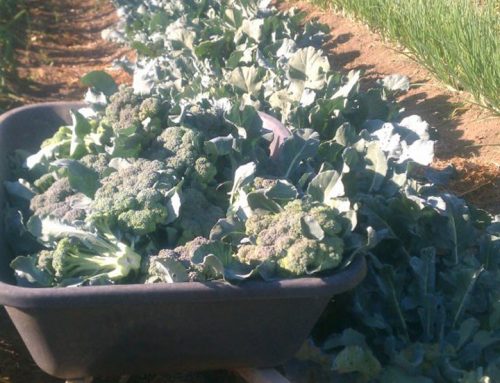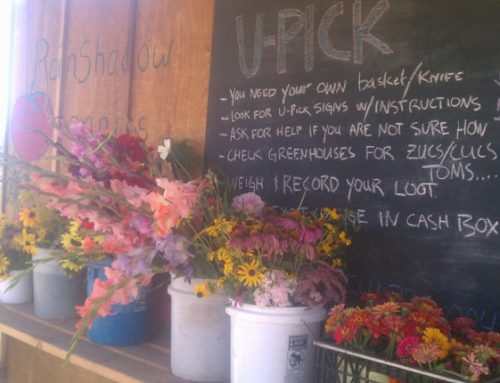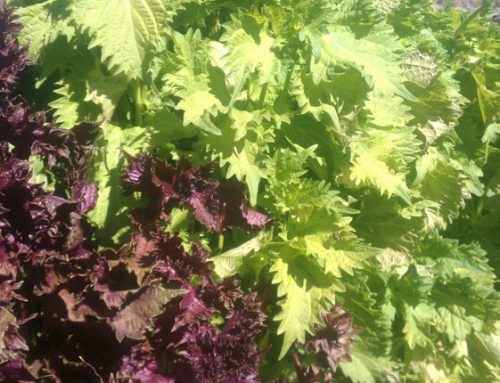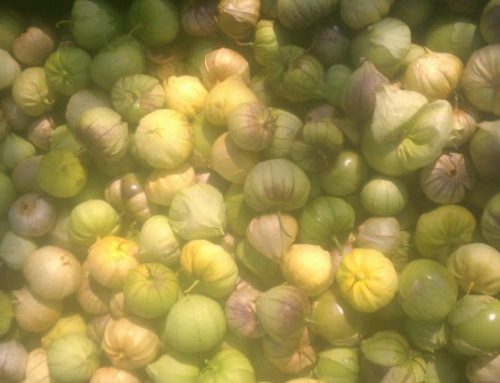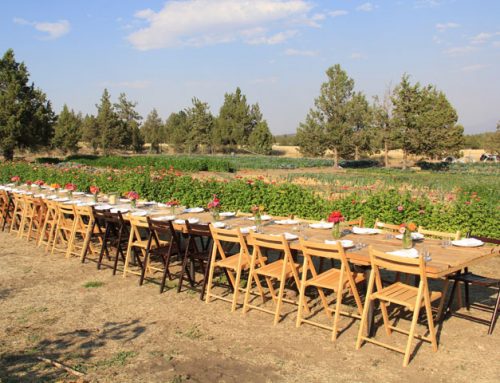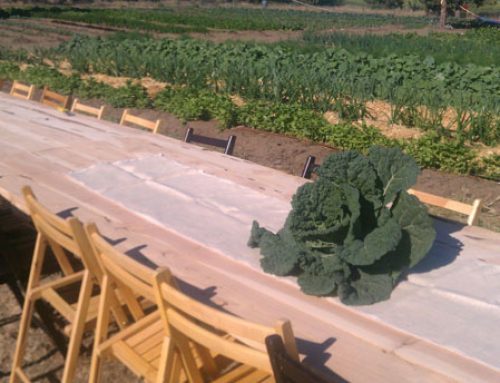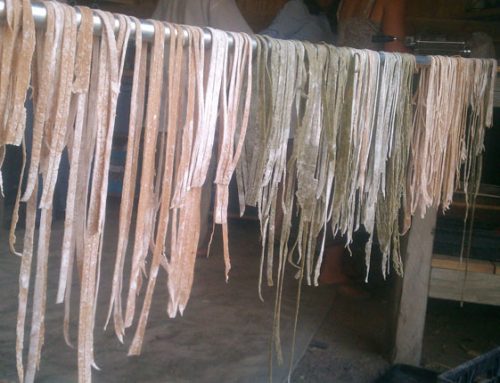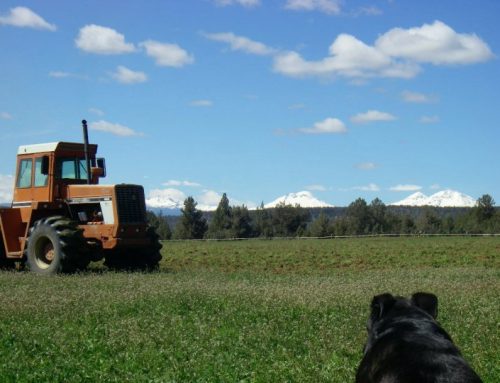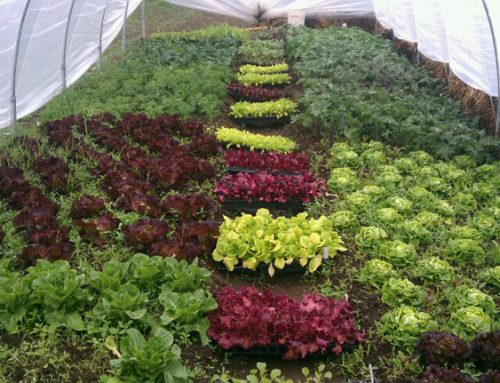Meet your farmer
My name is Adam Lavender, and I am one of the full-time farmers here at Rainshadow. I come from Long Island, NY and have a degree in outdoor education where I taught various outdoor skills and forest ecology to children and adults from all walks of life. My passion remains connecting people and the earth.
The smell of the soil, taste of the food that grows in it, the vibrant colors of the plants, and the wildlife that share in the glory. This magic is what drives the stoke of the farm and my desire to be a farmer. At Rainshadow, you can often find me taking soil samples or making nutrients to feed our farm.
After this season my partner Christine and I will be starting our own farm supplying healthy soil and happy plants to a community that could use it.
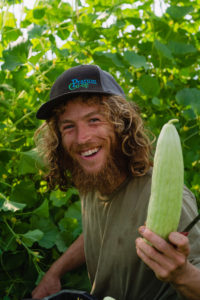
Photo credit: Javan Ward @29nrth
The seasons they are a changin’
As the season ebbs and flows down the river of temperature, winter gets closer and closer by the day. For many farms, the end of the season is near. For Rainshadow, it means we transition into growing nutrient dense vegetables in hoop houses and we hustle to harvest all our storage storage crops which will feed our community through the winter!
The crew has been hard at work to store more onions, potatoes, carrots, daikons, and beets. We are also getting the garden beds ready for cover crops and fall/winter veggie crops to be planted!
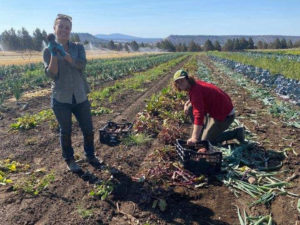
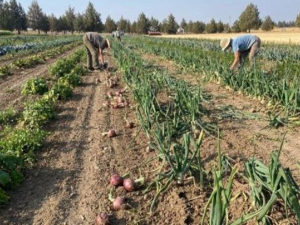
Farmers Christine and Richard harvest beets while Farmers Zoë and Noah harvest onions. Both are winter storage crops we are pulling, prepping, and putting to bed for our Winter CSAs and restaurant use! (Sign up for your winter CSA to make sure you don’t miss out!) (photo credit: Adam Lavendar.)
Let’s talk soil
Soil, whether it is clay, sand, or silt, acidic, basic, nutrient rich, or nutrient poor, cannot support a healthy garden without it’s soil community. The soil community is the single most important component of soil and includes microbes (such as bacterias, protozoa, nematodes, and archaea) and insects (like worms, roly-poly’s, butterflies, bees, and wasps). Microbes and plants act hand in hand to support one another and the community of life that depend on it to function properly. At Rainshadow we have a goal to support and balance the soil food web, that soil community, at all times–harvesting crops, weeding, caring for transplants.
When we plant flowers, let crops flower for our pollinators and bolt (when a plant goes to seed), and apply microbes and nutrients to our fields to support the healthy cycle of the microbial community we are amplifying the life in our soil. This makes it easier for plants to absorb nutrients in the soil which is why we have such nutrient dense foods at Rainshadow. Healthy soil equals nutrient rich foods. Lots of microbes in the soil means easy access to those nutrients for plants. No matter the task, there is always an eye on what we see as an indicator of what we can’t see.
Are there worms and insects? What types?
The worm plays a big role in the quality of the crop and are a sign to us that there are plant available sources of nitrogen. Worms aerate our soil, build more organic matter, bind soil particles together, and help to balance other microbial populations. Microbes eat one another, trap pathogens, and keep one another in check. Even the pests we fight (like aphids and spider mites) attract beneficial bugs like ladybugs, mantis, and rove beetles. When we start to see pests, they disappear shortly if we also see ladybugs, mantis, and beneficial spiders. Diverse systems create balance.
How green and big are the leafs, fruits and roots?
When our tomatoes get extra bushy, we cut them back to help focus the energy of the plant into ripening fruits. When we notice yellowing, decaying leaves on a kale plant, we know they will fall to the ground and the nutrients will be absorbed back into the soil through bacteria and arthropods breaking down the leaf and bringing the nutrients to the plant or storing them in the soil. This cycle creates matter to attract soil microbes and improve organic matter in the soil.
So, what does the arrival of winter mean for our soil? After we harvest, we try to keep the soil community as active as possible. We plant cover crops and let the plant matter from this season’s crops remain in the fields to break down over the winter (remember that soil organic matter from last week’s email?).
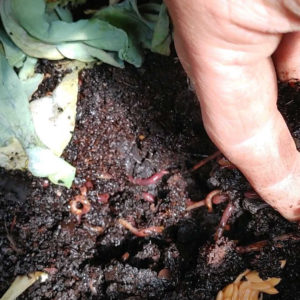
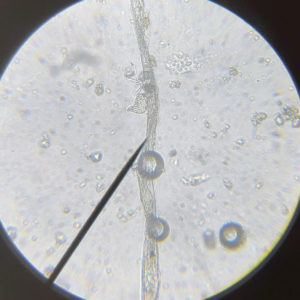
We tend to a crop of worms in our 4-season green house. The water that comes out of their composting home is a valuable component in our tea. Adam uses a microscope to check on the living organisms in our fermenting teas and soil. (Photo credit: Adam Lavendar.)
How do we improve our soil? By adding nutrients and microbes back into it!
Soil nutrients become depleted through time, temperature, plant use, and sunlight. To improve the microbes and nutrients available to our crops, we make specialized teas to supercharge bacterial and/or fungal populations. Depending on the life stage of the plant we want to feed the tea (vegetative or fruiting/flowering), we feed different recipes.
A tea in this situation is the same idea as what you drink: adding water to a concentrate to create a “drinkable” liquid. Teas feed plants in a plant available form which means the plant does not have to work as hard to photosynthesize and grow big and strong, drought resistant, bolt resistant, pest resistant, and heat/cold tolerant. Imagine what the next generation of seed is going to produce!
Our teas start by taking plant matter and putting them through a water or sugar based fermentation. Fermentation extracts, preserves, and breaks down a plant’s nutrients into amino acids and enzymes that a plant has easy access to. To complete the tea, we aerate the fermentation with a few other ingredients like worm castings, compost, and raw milk. The aeration amplifies the microbes and improves the nutrient uptake for the plant.
Some of our favorite plants to ferment include comfrey, yarrow, calendula, and dandelion. Our other favorite things to ferment are our strawberries, and fish. That’s right! FISH, we take the fish discard like the bones, leftover meat, heads, and skin, and we ferment it to make a powerful soil inoculant and plant feed.
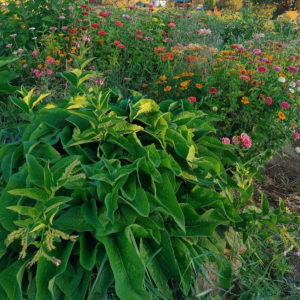
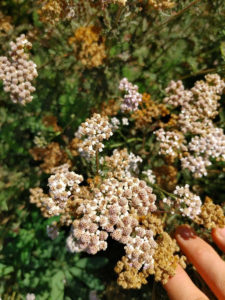
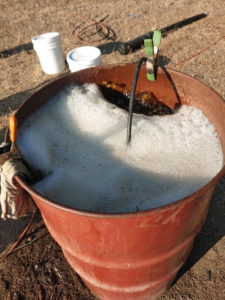
Comfrey grows next to zinnias in our 2-acre garden. We grow yarrow for our Desert Green CBD line, teas we sell in our Farm Store, and as a component in our teas. We aerate the tea to maximize its benefits. (Photo Credit: Adam Lavender.)
Harvest List
We think our core vegetables this week will be: bulk beets, kale, and onions. We will let you know on Wednesday at your pick up how many other items you will get to select and, of course if things have changed.
We have been keeping an eye on the hoops and 2-acre garden and have a pretty good idea of what is out there and ready to be harvested, but this is a Sunday estimation of what we will be harvesting on Tuesday. Also, because we have a market style CSA, this isn’t a guarantee of 1 of all these things for everyone. Instead, this will be the variety of what will hopefully (fingers crossed) have for you to choose from this week.)
Arugula
Asian greens
Thai basil
Italian Basil
Golden beets
Chiogga beets
Red Beets
Broccoli
Cabbage
Carrots
Cauliflowers
Chard
Cucumbers
Daikon radish
Eggplant
Fennel
Green onions
Kale
Kohlrabi
Lettuce Heads
Napa cabbage
Parsley
Lettuce Mix
Salad turnips
Yod Fah
summer squash
Radish
Tomatillos
Cherry tomatoes
Large tomatoes
Onions
Hot peppers
Sweet peppers
Melons
sweet corn
Potatoes
Meat CSA
This week our meat CSA will be showcasing our whole chickens! We will round out the CSA with ground beef for the small and ground beef and chuck roast for the large.
After defrosting the chicken, you can cut it into parts (see our July 14 CSA email for a video on how to do this and a delicious and simple grilling recipe), keep it in the freezer, whole, until you want to fire up the oven, or fire up the oven now and enjoy a roasted whole bird. Our April CSA and February CSA email also have some chicken recipes in them. (They are also a great place to check out what our Winter CSA looks like if you are wondering if purchasing a Winter CSA is right for you.)
Recipe Suggestion
I would like to encourage you all to save your chicken carcass to make broth. This is pretty easy and is another one of those ways to get the most out of the nutrients in our farm vegetables and meats. This is also a great way to use EVERYTHING! Essentially, you save all your chicken bones (raw or cooked, chewed on or freshly cut) and all your vegetable “waste” from your onions, celery, carrots, fennel, and garlic type produce and freeze them together or separate. This waste includes skins, roots, tough ends, celery leaves, carrot tops, etc.
When you decide you have a critical mass in your freezer, you dump everything all into a large stock pot, top with water, add seasonings (like dried herbs, peppercorns, or white wine but not salt) and cook until you have chicken broth. Once the broth is cooked down, then you want to add salt to taste. As Chef says, if you salt too early with this, it has a tendency to get too salty as the liquid reduces and the savory-ness of the broth increases.
When the broth is done, strain it and freeze it in your usable amounts. I like to do muffin tin cups or pint jars. When I want to make a soup or sauce, I just pull out the frozen broth and, voila, I am ready to go. (This same recipe will work for whatever broth you want, just substitute beef or pork bones for the chicken or omit the meat completely.)
|
|
|
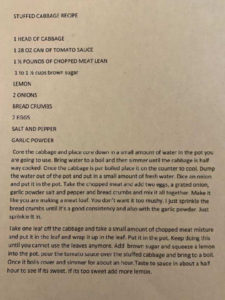
Veggie IDs
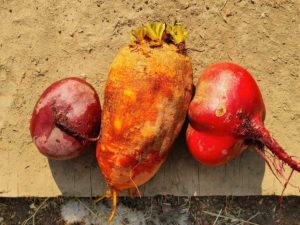
Red Beet: Deep red color, sweet rich taste, most popular to pickle or turn into drinking vinegar
Gold beet: Gold color, the sweetest of the beets, vibrant in salads or for a colorful borscht
Chiogga Beet: Also known as the Candy Cane Beet, red and white bands on the inside, light red skin. Less sweet, beautiful in fresh salads, tastes great but looses its visual verve when cooked.
I want to leave you with some parting encouragement: don’t scrub all the dirt off your veggies, leave the skin on your carrots, zucchini, cucumbers, and potatoes. Not only are there lots of vitamins and minerals stored in this part of the vegetables, but this little bit of dirt is good for your digestions, nutrient uptake, and regulation of bodily functions.
Rock n’ Roll,
Adam
Please email us and let us know if you can’t make Wednesday or if someone else is picking up for you. We can’t wait to see you on Wednesday!
